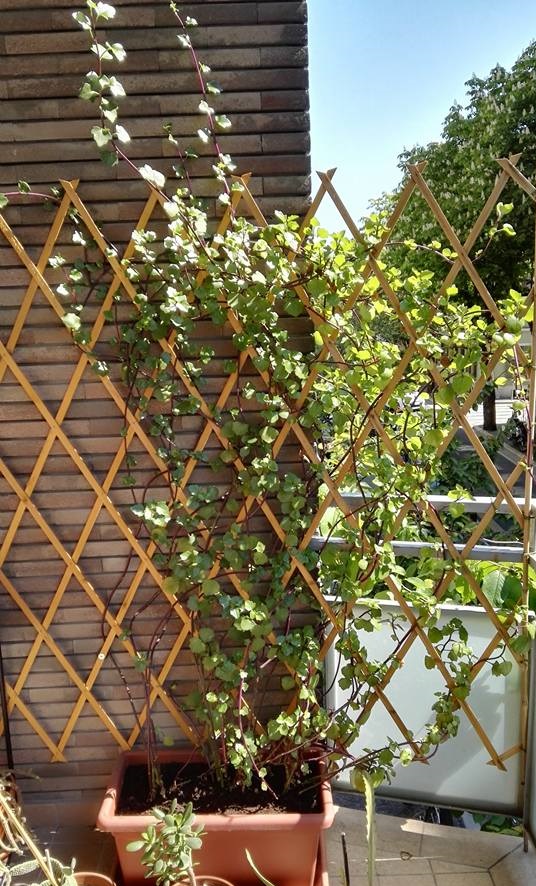|
Euphorbia Dendroides
''Euphorbia dendroides'', also known as tree spurge, is a small tree or large shrub of the family Euphorbiaceae that grows in semi-arid and mediterranean climates. Distribution and habitat ''Euphorbia dendroides'' has a wide distribution throughout the Mediterranean Sea, from the Balearic Islands in the west to the Aegean Islands in the east. It is found primarily in Europe and is restricted to northern Tunisia in North Africa. This plant is sensitive to frost, so it only grows on protected and sunny mountainsides in hilly areas. It has been introduced to other countries out of its original range as an ornamental tree. Description This bush also has uses in traditional medicine; like many other species of genus ''Euphorbia'' its toxic white and sticky sap has been used to treat skin excrescences, like cancers, tumors, and warts since ancient times. Gallery File:Flore coloriée de poche du littoral méditerranéen de Gênes à Barcelone y compris la Corse (6244468168).jpg, ... [...More Info...] [...Related Items...] OR: [Wikipedia] [Google] [Baidu] |
Carl Linnaeus
Carl Linnaeus (; 23 May 1707 – 10 January 1778), also known after his ennoblement in 1761 as Carl von Linné Blunt (2004), p. 171. (), was a Swedish botanist, zoologist, taxonomist, and physician who formalised binomial nomenclature, the modern system of naming organisms. He is known as the "father of modern taxonomy". Many of his writings were in Latin; his name is rendered in Latin as and, after his 1761 ennoblement, as . Linnaeus was born in Råshult, the countryside of Småland, in southern Sweden. He received most of his higher education at Uppsala University and began giving lectures in botany there in 1730. He lived abroad between 1735 and 1738, where he studied and also published the first edition of his ' in the Netherlands. He then returned to Sweden where he became professor of medicine and botany at Uppsala. In the 1740s, he was sent on several journeys through Sweden to find and classify plants and animals. In the 1750s and 1760s, he continued to coll ... [...More Info...] [...Related Items...] OR: [Wikipedia] [Google] [Baidu] |
Ornamental Tree
Ornamental plants or garden plants are plants that are primarily grown for their beauty but also for qualities such as scent or how they shape physical space. Many flowering plants and garden varieties tend to be specially bred cultivars that improve on the original species in qualities such as color, shape, scent, and long-lasting blooms. There are many examples of fine ornamental plants that can provide height, privacy, and beauty for any garden. These ornamental perennial plants have seeds that allow them to reproduce. One of the beauties of ornamental grasses is that they are very versatile and low maintenance. Almost any types of plant have ornamental varieties: trees, shrubs, climbers, grasses, succulents. aquatic plants, herbaceous perennials and annual plants. Non-botanical classifications include houseplants, bedding plants, hedges, plants for cut flowers and foliage plants. The cultivation of ornamental plants comes under floriculture and tree nurseries, whic ... [...More Info...] [...Related Items...] OR: [Wikipedia] [Google] [Baidu] |
Plants Described In 1753
Plants are predominantly photosynthetic eukaryotes of the kingdom Plantae. Historically, the plant kingdom encompassed all living things that were not animals, and included algae and fungi; however, all current definitions of Plantae exclude the fungi and some algae, as well as the prokaryotes (the archaea and bacteria). By one definition, plants form the clade Viridiplantae (Latin name for "green plants") which is sister of the Glaucophyta, and consists of the green algae and Embryophyta (land plants). The latter includes the flowering plants, conifers and other gymnosperms, ferns and their allies, hornworts, liverworts, and mosses. Most plants are multicellular organisms. Green plants obtain most of their energy from sunlight via photosynthesis by primary chloroplasts that are derived from endosymbiosis with cyanobacteria. Their chloroplasts contain chlorophylls a and b, which gives them their green color. Some plants are parasitic or mycotrophic and have lost t ... [...More Info...] [...Related Items...] OR: [Wikipedia] [Google] [Baidu] |
Least Concern Plants
Comparison is a feature in the morphology or syntax of some languages whereby adjectives and adverbs are inflected to indicate the relative degree of the property they define exhibited by the word or phrase they modify or describe. In languages that have it, the comparative construction expresses quality, quantity, or degree relative to ''some'' other comparator(s). The superlative construction expresses the greatest quality, quantity, or degree—i.e. relative to ''all'' other comparators. The associated grammatical category is degree of comparison. The usual degrees of comparison are the ''positive'', which simply denotes a property (as with the English words ''big'' and ''fully''); the ''comparative'', which indicates ''greater'' degree (as ''bigger'' and ''more fully''); and the ''superlative'', which indicates ''greatest'' degree (as ''biggest'' and ''most fully''). Some languages have forms indicating a very large degree of a particular quality (called ''elative'' in ... [...More Info...] [...Related Items...] OR: [Wikipedia] [Google] [Baidu] |
Wart
Warts are typically small, rough, hard growths that are similar in color to the rest of the skin. They typically do not result in other symptoms, except when on the bottom of the feet, where they may be painful. While they usually occur on the hands and feet, they can also affect other locations. One or many warts may appear. They are not cancerous. Warts are caused by infection with a type of human papillomavirus (HPV). Factors that increase the risk include use of public showers and pools, working with meat, eczema and a weak immune system. The virus is believed to enter the body through skin that has been damaged slightly. A number of types exist, including "common warts", plantar warts, " filiform warts", and genital warts. Genital warts are often sexually transmitted. Without treatment, most types of warts resolve in months to years. A number of treatments may speed resolution, including salicylic acid applied to the skin and cryotherapy. In those who are otherwis ... [...More Info...] [...Related Items...] OR: [Wikipedia] [Google] [Baidu] |
Toxic
Toxicity is the degree to which a chemical substance or a particular mixture of substances can damage an organism. Toxicity can refer to the effect on a whole organism, such as an animal, bacterium, or plant, as well as the effect on a substructure of the organism, such as a cell ( cytotoxicity) or an organ such as the liver (hepatotoxicity). By extension, the word may be metaphorically used to describe toxic effects on larger and more complex groups, such as the family unit or society at large. Sometimes the word is more or less synonymous with poisoning in everyday usage. A central concept of toxicology is that the effects of a toxicant are dose-dependent; even water can lead to water intoxication when taken in too high a dose, whereas for even a very toxic substance such as snake venom there is a dose below which there is no detectable toxic effect. Toxicity is species-specific, making cross-species analysis problematic. Newer paradigms and metrics are evolving to ... [...More Info...] [...Related Items...] OR: [Wikipedia] [Google] [Baidu] |
Euphorbia
''Euphorbia'' is a very large and diverse genus of flowering plants, commonly called spurge, in the family Euphorbiaceae. "Euphorbia" is sometimes used in ordinary English to collectively refer to all members of Euphorbiaceae (in deference to the type genus), not just to members of the genus. Euphorbias range from tiny annual plants to large and long-lived trees. The genus has roughly 2,000 members, making it one of the largest genera of flowering plants. It also has one of the largest ranges of chromosome counts, along with ''Rumex'' and ''Senecio''. '' Euphorbia antiquorum'' is the type species for the genus ''Euphorbia''. It was first described by Carl Linnaeus in 1753 in ''Species Plantarum''. Some euphorbias are widely available commercially, such as poinsettias at Christmas. Some are commonly cultivated as ornamentals, or collected and highly valued for the aesthetic appearance of their unique floral structures, such as the crown of thorns plant ('' Euphorbia milii'' ... [...More Info...] [...Related Items...] OR: [Wikipedia] [Google] [Baidu] |
Complementary And Alternative Medicine
Alternative medicine is any practice that aims to achieve the healing effects of medicine despite lacking biological plausibility, testability, repeatability, or evidence from clinical trials. Complementary medicine (CM), complementary and alternative medicine (CAM), integrated medicine or integrative medicine (IM), and holistic medicine attempt to combine alternative practices with those of mainstream medicine. Alternative therapies share in common that they reside outside of medical science and instead rely on pseudoscience. Traditional practices become "alternative" when used outside their original settings and without proper scientific explanation and evidence. Frequently used derogatory terms for relevant practices are ''new age'' or ''pseudo-'' medicine, with little distinction from quackery. Some alternative practices are based on theories that contradict the established science of how the human body works; others resort to the supernatural or superstitious to explain t ... [...More Info...] [...Related Items...] OR: [Wikipedia] [Google] [Baidu] |
Flora Iberica
''Flora Iberica: Plantas vasculares de la Península Ibérica e Islas Baleares'' ("Vascular plants of the Iberian Peninsula and Balearic Islands") is a Spanish scientific journal specializing in botany Botany, also called plant science (or plant sciences), plant biology or phytology, is the science of plant life and a branch of biology. A botanist, plant scientist or phytologist is a scientist who specialises in this field. The term "bot .... It was established in 1980. It is published by the Real Jardín Botánico de Madrid. References Botany in Europe Flora of Spain Spanish-language journals Publications established in 1980 1980 establishments in Spain {{botany-journal-stub ... [...More Info...] [...Related Items...] OR: [Wikipedia] [Google] [Baidu] |
Tree
In botany, a tree is a perennial plant with an elongated stem, or trunk, usually supporting branches and leaves. In some usages, the definition of a tree may be narrower, including only woody plants with secondary growth, plants that are usable as lumber or plants above a specified height. In wider definitions, the taller palms, tree ferns, bananas, and bamboos are also trees. Trees are not a taxonomic group but include a variety of plant species that have independently evolved a trunk and branches as a way to tower above other plants to compete for sunlight. The majority of tree species are angiosperms or hardwoods; of the rest, many are gymnosperms or softwoods. Trees tend to be long-lived, some reaching several thousand years old. Trees have been in existence for 370 million years. It is estimated that there are some three trillion mature trees in the world. A tree typically has many secondary branches supported clear of the ground by the trunk. This trunk typi ... [...More Info...] [...Related Items...] OR: [Wikipedia] [Google] [Baidu] |
Balearic Islands
The Balearic Islands ( ca, Illes Balears ; es, Islas Baleares or ) are an archipelago in the western Mediterranean Sea, near the eastern coast of the Iberian Peninsula. The archipelago forms a Provinces of Spain, province and Autonomous communities of Spain, autonomous community of Spain, with Palma de Mallorca being its capital and largest city. Formerly part of the Kingdom of Majorca, Kingdom of Mallorca, the islands were made a province in the 19th century provincial division, which in 1983 received a Statute of Autonomy of the Balearic Islands, Statute of Autonomy. In its later reform of 2007, the Statute designates the Balearic Islands as one of the ''nationalities and regions of Spain, nationalities'' of Spain. The official Languages of Spain, languages of the Balearic Islands are Catalan language, Catalan and Spanish language, Spanish. The archipelago islands are further grouped in western Pityusic Islands, Pytiuses (the largest being Ibiza and Formentera), and east ... [...More Info...] [...Related Items...] OR: [Wikipedia] [Google] [Baidu] |






